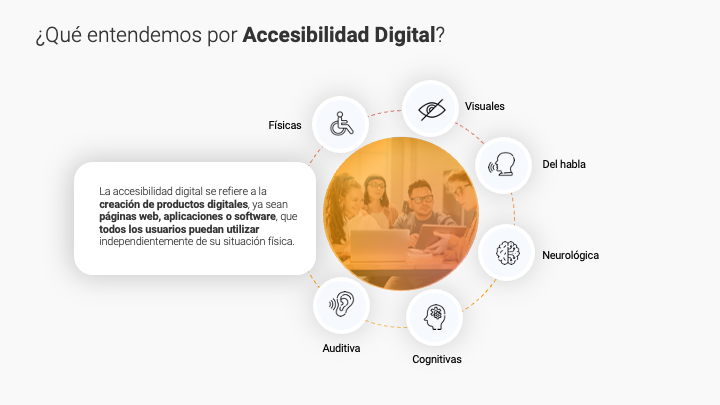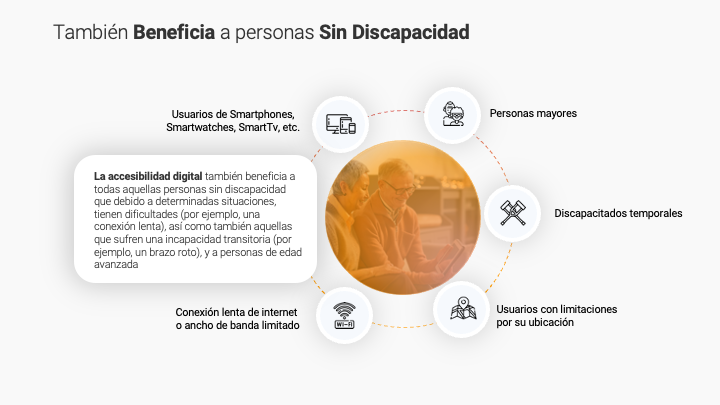Menu


In our daily lives, we constantly find ourselves navigating a digital world that has become as essential as the air we breathe. From booking a medical appointment online to ordering groceries, digital technology integrates into every aspect of our routine. But have you ever tried using your phone under direct sunlight and found yourself unable to read the screen? Or perhaps, you’ve tried navigating a website with one hand while holding a child or a cup of coffee in the other. These are everyday examples where digital accessibility not only benefits people with permanent disabilities but becomes a key resource for everyone, ensuring we can interact with the digital world in a variety of situations. Digital accessibility thus presents itself as a fundamental pillar to ensure that all people, regardless of our abilities or circumstances, can enjoy the benefits of the digital age.
Digital accessibility ensures that websites, applications, and all digital tools are usable by the widest diversity of people possible. This includes those with permanent disabilities, temporary limitations, and those in changing circumstances, demonstrating that accessibility benefits everyone.

Digital accessibility refers to the creation of digital products, whether web pages, applications, or software, that all users can use regardless of their physical situation.

Digital accessibility also benefits all those without disabilities who, due to certain situations, have difficulties (for example, a slow connection), as well as those who suffer a temporary disability (for example, a broken arm), and elderly people.
Adopting the Web Content Accessibility Guidelines (WCAG) from the W3C is crucial for advancing towards inclusive digital accessibility. These internationally recognized guidelines provide a detailed framework of recommendations designed to make web and digital content accessible to all users.
If you want to know what the WCAG are and how they can transform your website, intranet, or application into a more accessible space, explore our detailed article on this topic.
WCAG 2.1 Web Content Accessibility Guidelines
Implementing digital accessibility transcends legal compliance; it represents an invaluable opportunity to improve the user experience and open our platforms to a broader audience.”It is not only a legal obligation but an opportunity to improve the user experience for all people, regardless of their characteristics.”
In the realm of digital accessibility, every improvement counts.
“In accessibility, a success case is already improving something.”
This approach encourages us to value every step forward as a victory in the fight for broader inclusion.
The journey towards full digital accessibility is an ongoing journey that involves all of us: designers, developers, content creators, and users. Every step we take to remove barriers in the digital world not only improves the online experience for people with disabilities but also enriches our digital community, making it more diverse, inclusive, and equitable.
Recognizing digital accessibility as an essential right is just the beginning. Acting to implement best practices and standards, such as the WCAG, is moving towards a future where everyone can fully participate in the digital society, without exceptions.
We invite everyone to be part of this change: explore, learn, and apply the principles of digital accessibility in your work and daily life. Together, we can build that accessible future we envision, a digital space where every person, regardless of their abilities, can share, learn, and grow.
Because in an increasingly connected world, digital accessibility is not just a necessity, it is our shared responsibility. Let’s make inclusion a reality for everyone.
Are You Ready to Take the Step in Digital Accessibility?
Contact us to get started!


Cristina Torné Soler
Compartir en Redes Sociales
© Raona 2023. All Rights Reserved